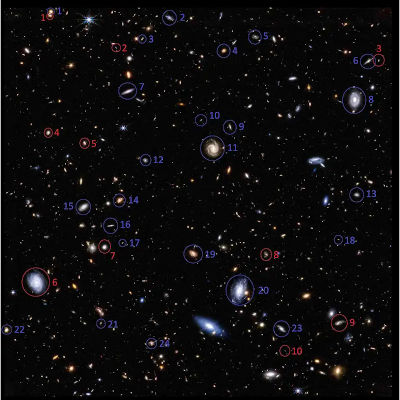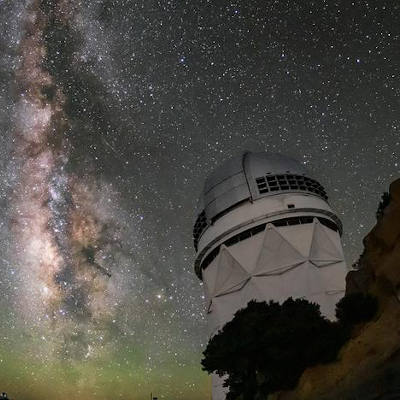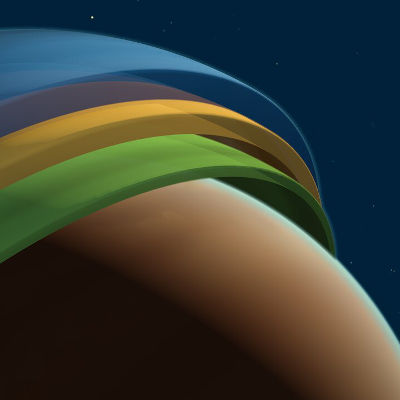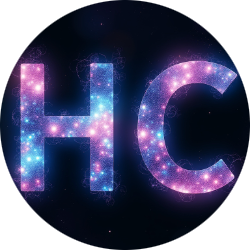Funding for next-generation telescopes to capture light from the Big Bang and search for gravitational waves announced
Oct. 27, 2023.
3 mins. read.
2 Interactions
National Science Foundation and Dept. of Energy address the biggest question in astrophysics
The National Science Foundation announced Oct. 26 that it has awarded $3.7 million for final designs of next-generation telescopes to capture the microwave light from the earliest moments of the cosmic microwave background—light still traveling across the universe from the earliest moments after the Big Bang.
To capture that light, astrophysicists at the University of Chicago and Lawrence Berkeley National Laboratory plan to build telescopes and infrastructure in both Antarctica and Chile.
The researchers will also search for “primordial” gravitational waves—the physical vibrations from the Big Bang—and will investigate the mystery known as dark matter.
Biggest question
The research goal is to answer the biggest question: did our universe begin with a burst of expansion at the dawn of time (known as inflation), which would have stretched minuscule quantum-mechanical fluctuations into the initial seeds of the structure in the universe today?
The entire project, known as CMB-S4, is proposed to be jointly funded by the National Science Foundation and the U.S. Department of Energy. It is expected to cost on the order of $800 million and to come fully online in the early 2030s. The collaboration currently involves 450 scientists from more than 100 institutions, spanning 20 countries.
“With these telescopes we will be testing our theory of how our entire universe came to be, but also looking at physics that are at the most extreme scales in a way we simply cannot do with particle physics experiments on Earth,” said John Carlstrom, the Subrahmanyan Chandrasekhar Distinguished Service Professor of Astronomy and Astrophysics and Physics, who serves as the project scientist for CMB-S4.

This in a current snapshot of the cosmic microwave background, the oldest light in our universe, from when the cosmos was just 380,000 years old. The colors of the map represent small temperature fluctuations that ultimately resulted in the galaxies we see today. (Credit: ESA and the Planck Collaboration)
The South Pole advantage
The CMB-S4 project would involve two large telescopes in the mountains of Chile and nine smaller ones in Antarctica. “The South Pole is the only location that allows a telescope to look at one place in the sky continuously, because it’s at the pole where the rest of the Earth spins around,” explained Jeff Zivick, deputy project manager for CMB-S4.
The South Pole Telescope, which has been operating since 2007, is equipped with the most powerful cosmic microwave background (CMB) camera.
CMB-S4 is expected to have nearly 500,000 superconducting detectors, a significant increase over all precursor cosmic microwave background experiments combined. The project is also expected to be funded by the U.S. Department of Energy. The National Science Foundation portion of the project is led by the University of Chicago; the Department of Energy’s portion is led by Lawrence Berkeley National Laboratory.
Primordial gravitational waves
This funding would also look for evidence of “primordial gravitational waves”—the ripples in space-time that would have been created if the universe really did explode into being from a space much smaller than a single subatomic particle. These ripples would interact with the cosmic microwave background, creating a distinct but extremely faint signature.
Primordial gravitational waves would also be evidence to connect the force of gravity with the laws of quantum mechanics, said Jim Strait, a physicist at Lawrence Berkeley National Laboratory and the project director for CMB-S4.
“The mismatch between the two theories—one that applies at the very largest scales in the universe and the other at the very smallest—has been plaguing scientists for decades.
Let us know your thoughts! Sign up for a Mindplex account now, join our Telegram, or follow us on Twitter.


.png)

.png)


.png)






0 Comments
0 thoughts on “Funding for next-generation telescopes to capture light from the Big Bang and search for gravitational waves announced”